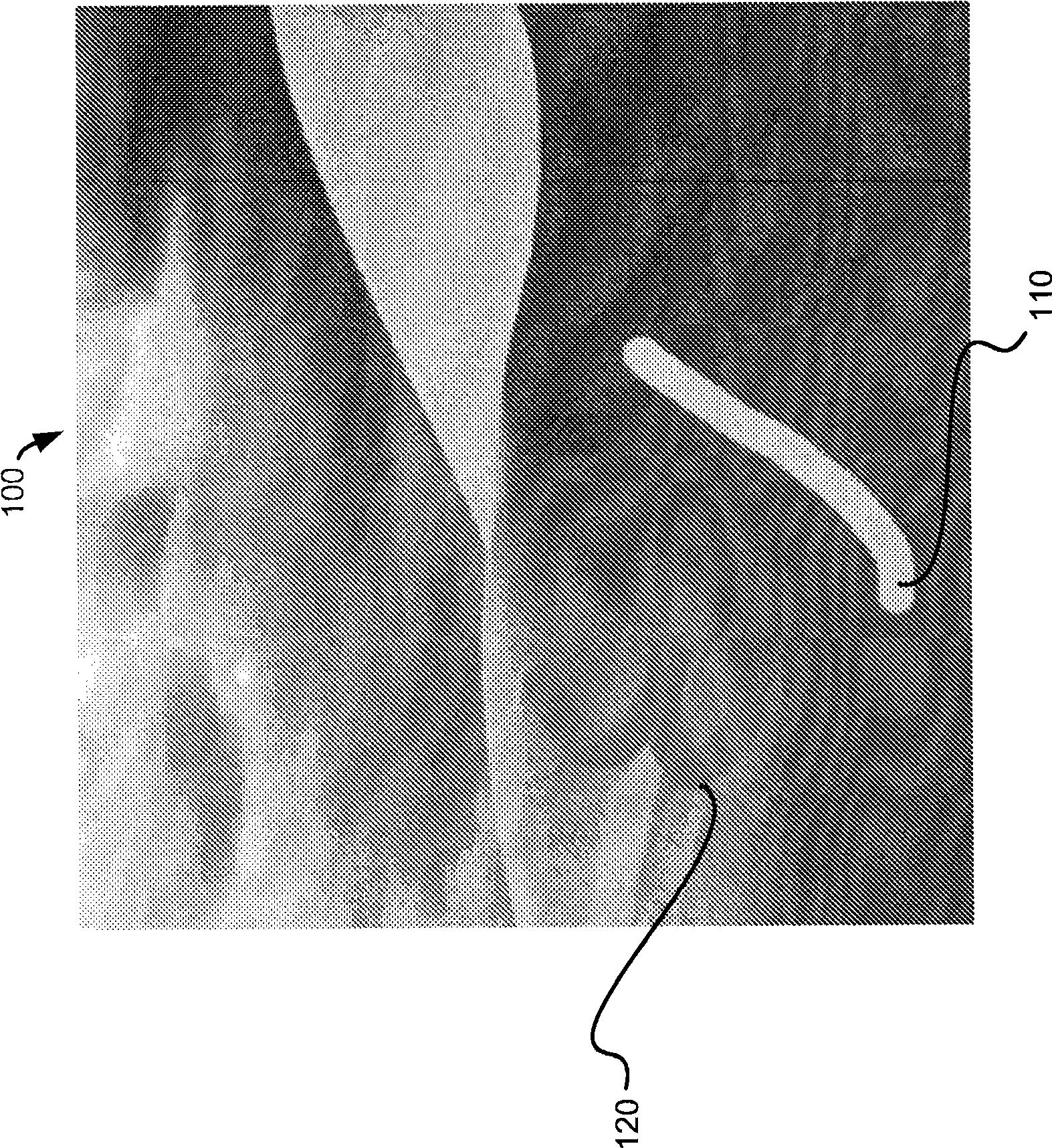Improving image masks
An image and mask technology, applied in the field of graphics and image processing, can solve problems such as incomplete inclusion, and achieve the effect of improving accuracy
- Summary
- Abstract
- Description
- Claims
- Application Information
AI Technical Summary
Problems solved by technology
Method used
Image
Examples
Embodiment Construction
[0028] figure 1 An image 100 is shown with a foreground stroke 110 and a background stroke 120 . In general, an image can be represented by a raster of pixels (eg, a two-dimensional array of pixels), where each pixel encodes a value (eg, color, brightness, or both) describing the image at a particular location. Color images are usually specified in terms of specific color spaces (for example, RGB, CMYK, CIELAB, CIE XYZ, CIE LUV, YCC, YIQ, HSB, HSL, grayscale, or black and white), which determine how each The pixel's value is interpreted as a color. For example, in an RGB-encoded image, each pixel is encoded by at least three values corresponding to each of the three RGB color components (red, green, and blue). In a grayscale image, colors correspond to levels of lightness, or shades of gray. In a black and white image, the color is either white or black.
[0029] Typically, an image and its constituent pixels are described and stored by a file having an image format such...
PUM
 Login to View More
Login to View More Abstract
Description
Claims
Application Information
 Login to View More
Login to View More - R&D
- Intellectual Property
- Life Sciences
- Materials
- Tech Scout
- Unparalleled Data Quality
- Higher Quality Content
- 60% Fewer Hallucinations
Browse by: Latest US Patents, China's latest patents, Technical Efficacy Thesaurus, Application Domain, Technology Topic, Popular Technical Reports.
© 2025 PatSnap. All rights reserved.Legal|Privacy policy|Modern Slavery Act Transparency Statement|Sitemap|About US| Contact US: help@patsnap.com



